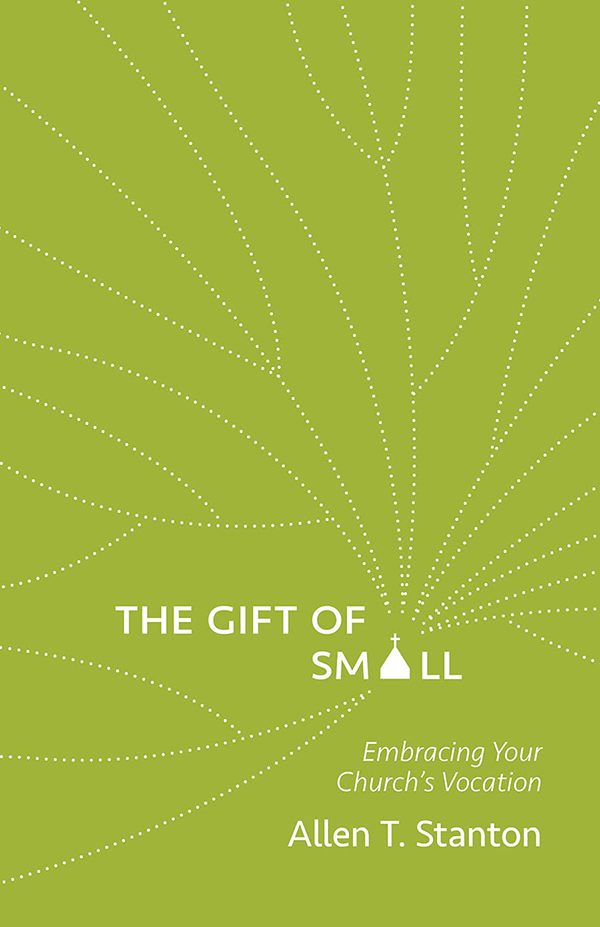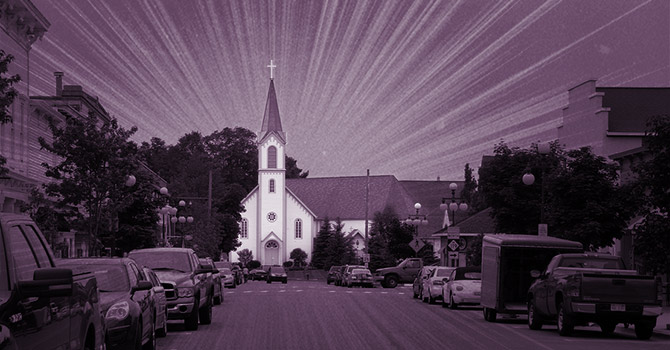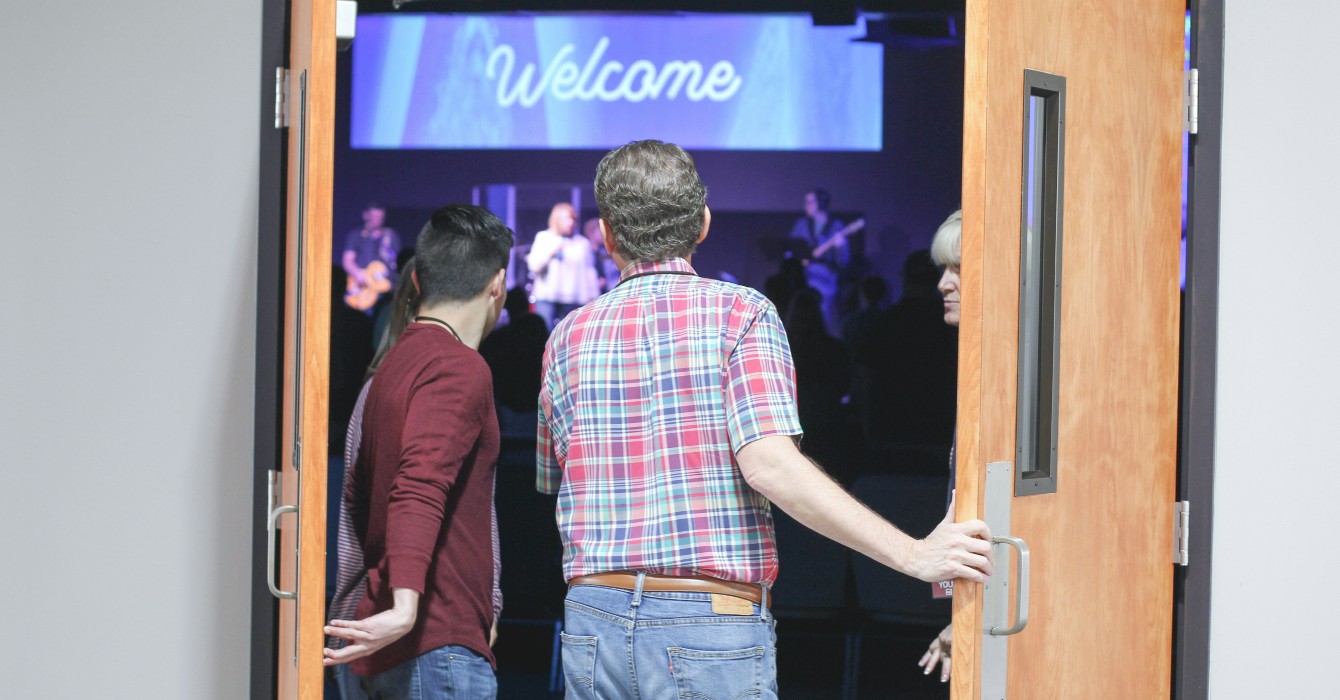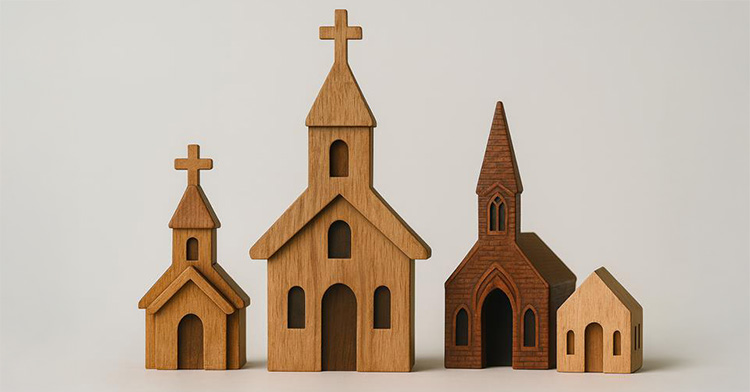Often, small churches are seen as deficient — institutions in decline, where the pastor serves as a chaplain to a dwindling congregation. But Allen T. Stanton disputes that idea.
“The small church is a place where we can learn a lot of things about adaptability, about nimbleness, about resiliency,” he said. “I want to pop the myth that small churches are lacking something.”

Stanton is a United Methodist pastor who works on rural development initiatives in higher education settings. In his new book, “The Gift of Small: Embracing Your Church’s Vocation,” he draws on personal experience, demographic research and theology to argue that small churches aren’t a problem.
In fact, he says, they are uniquely equipped to form disciples because of their emphasis on relationships.
Stanton serves as the director of strategic initiatives in the College of Dentistry at the University of Tennessee Health Science Center, where he oversees a $53 million initiative to expand access to dental care in Tennessee. He also is a senior fellow for leadership, faith and community at the University of the Ozarks.

He holds degrees from Wake Forest University, Duke Divinity School and Southern Methodist University.
Stanton spoke to Faith & Leadership’s Sally Hicks about the myths and misconceptions about small churches. The following is an edited transcript.
Faith & Leadership: What’s the most important thing you want people to understand about small churches?
Allen Stanton: A bigger church is not necessarily a better church. We sometimes look at a small church and we immediately think that there’s a problem inherent in it because it’s small, and that if it’s going to become a good church, it has to be a bigger church.
I don’t think that captures some inherent gifts that are inside the small church or some things that small churches do really well.
F&L: How do you define a small church?
AS: I don’t think there’s a great definition out there. I picked 100 as a metric point, because the National Congregations Study uses that. I do think around 150 the organizational structure takes a big shift; you start to shift into a programmatic model. So you’re shifting out of some of those essences of the small-membership church.
A friend of mine said that we should start using the phrase “normative-size church,” which would actually be about 30 average worship attendance.
F&L: What’s the most important thing that small churches do well?
AS: In my view, the telos of the church is to form people to be disciples of Jesus Christ, and that happens through relationships. That happens through a relationship of the community. It happens through relationality between us and God.
What small churches do really well is emphasize the relationship between people. Everything becomes an opportunity to theologically think about how we are doing life together, just because you’re always surrounded by it.
Take a mundane task in the church, like a finance committee meeting. You have a finance committee, but everybody’s worried about the budget. If you have 20 people, you’re all aware of the budget.
Everything becomes an opportunity to make sense of our whole community and ourselves in light of our faith tradition. Small churches do that well because you’re required to immediately be in relationship with people when you walk in.
Whereas if I go to a larger congregation — and this is not a dismissal of larger congregations, or criticism — there’s a little bit more intentionality about how I become involved. I’m going to need to find a small group. I’m going to need to find some sort of other programmatic structure to get into if I want to really be connected.
In the small church, you show up and you’re going to be forced into it. You just are. It may be tense. Yet tension is a virtue that helps us grow.
When I was a pastor, I remember there was a parishioner who didn’t particularly like me, but sitting across from him was the only spot at a potluck dinner we had. We sat there and made small talk, politely talked for an hour and a half at this dinner.
So you’re learning something about how to live peacefully with one another even when one of them does not like you, right? Because you’re still committed to the same community and you’re committed to the same faith and you’re getting to a place to say, “I think we can still live together.”
F&L: What can pastors do to bring people together and shift the idea that because you’re small, you’re dying?
AS: Finding those natural ways that we can live out our faith and encouraging those to take shape. It can be a little daunting for a pastor, I think, because there isn’t a program to report.
Nonprofit studies are really helpful. People engage in large nonprofits through programs. So when they volunteer, they are going for a particular program, and then they show up. And that might be a monthly thing or semiannual thing. They show up to count at the marathon or build a house for Habitat for Humanity every other month.
In smaller nonprofits, the people who show up are there for the life of the organization. They’re balancing the checkbook; they’re working to clean the sanctuary; they’re cooking meals. They’re showing up just to make sure the doors [are open] and the organization is able to stay afloat.
There are some natural good things that come out of that. People have strong opinions about the future of the church, and that’s because their identity is tied up into it and they feel like they’re part of what makes it sustainable.
If you’re a pastor and people are already doing tons of work and the first thing you say is, “We need to be these other churches and do a lot of programs,” everyone’s just going to be burned out.
Once you figure out people are engaging differently, then I think the question becomes, “How do we live out our faith through these very natural ways?” And small churches are quite adept at doing that.
I was with a small church in Arkansas where I spent the last year working with them through a major transition. They have a few programmatic things that they do as mission, but by and large, what they’re doing is saying, “When somebody in the community has a need, we come into the church, we discuss it, and we figure out a way to meet that need.”
Sometimes that’s just five people gathering and saying, “We’re going to take care of this issue on our own.” That’s wholly faithful, and that’s great community engagement, and that shows a deep investment in the community and a knowledge of the community.
Why would we discount that because it’s not like a program that people can volunteer for?
F&L: Is there a difference between a church that was always small and a church that used to be big and got small?
AS: Yes, there’s a different set of challenges in the expectations that we bring.
The church I attend now sold the sanctuary that seated 500 people. Now I would venture, on a good Sunday, we have 60. And that decline happened steadily since the 1970s, but selling the sanctuary meant that we had to rearticulate our vocation of what it meant to be a church.
Then it becomes a question of, “Well, how do we engage with this place, because our entire understanding of what it meant to be a church has shifted?” That’s hard work, and I think more and more churches are going to have to grapple with that. I mean, it really is a fundamental shift of vocation.
You’re getting to a place and saying, “I cannot be the thing I once was, so what am I now?” And you can either burn yourself out trying to be what you once were or you can accept that we might have a new calling as an organization.
You’re not negating that past. You’re celebrating that past, but you’re not saying, “This is what it meant to be good.” You’re still good. You’re still faithful.
F&L: You push back as well against the idea that a small congregation is necessarily an older congregation.
AS: Every religious organization, every religious community is older than it was. On average, the average age is older than it was 40 years ago. I mean, there’s no arguing with that. And smaller churches do have a little bit higher average age.
But small-membership churches are not just full of retirees in the way that we often picture them to be. They are often intergenerational. And so that might be a family or that might be just the community makeup.
Then the second part of that is, are older churches bad? I think not. People live longer today. When you retire, you still have a lot of life to give. There are really great things that come out of that.
At 35, I have no time, because I have two kids. I have not a ton of disposable income, because I have high student loans, and I have not developed all my skill set in the way that somebody that is retired would have.
At my church, it’s all the recent retirees who do things. They’re the ones that are running the food pantry. They’re the ones that are organizing all this stuff. They’re really keeping the church alive.
F&L: You say that being a formational community is the main job of the church. How are small churches particularly good at being formational communities?
AS: Being formed in something is about habits of being in a community. You learn what it means to have a faith in a community. You learn how to think about the faith in a community. You learn the practices of faith and the habits of your tradition.
I’m not saying you can’t learn this in a large church. I do think that there’s a particular strength of small churches where you pick up on the rhythms of life and pick up on how we live together.
My Sunday school classroom is an excellent example, because there’s a ton of people with different life backgrounds and different education levels and different careers. I mean, there are a couple of us pastors; one guy teaches microbiology at the community college; there’s a Vietnam vet. We're all sitting in the room discussing Richard Rohr.
You hear some really great ideas and some thoughts, and it’s not just about the theology and abstractness. It’s about, “How is this playing out in our day-to-day life?” And then we all get up and go downstairs and have worship together, and we’re all sitting in the same small church.
It goes back to that relationship. You can’t really escape it.
















